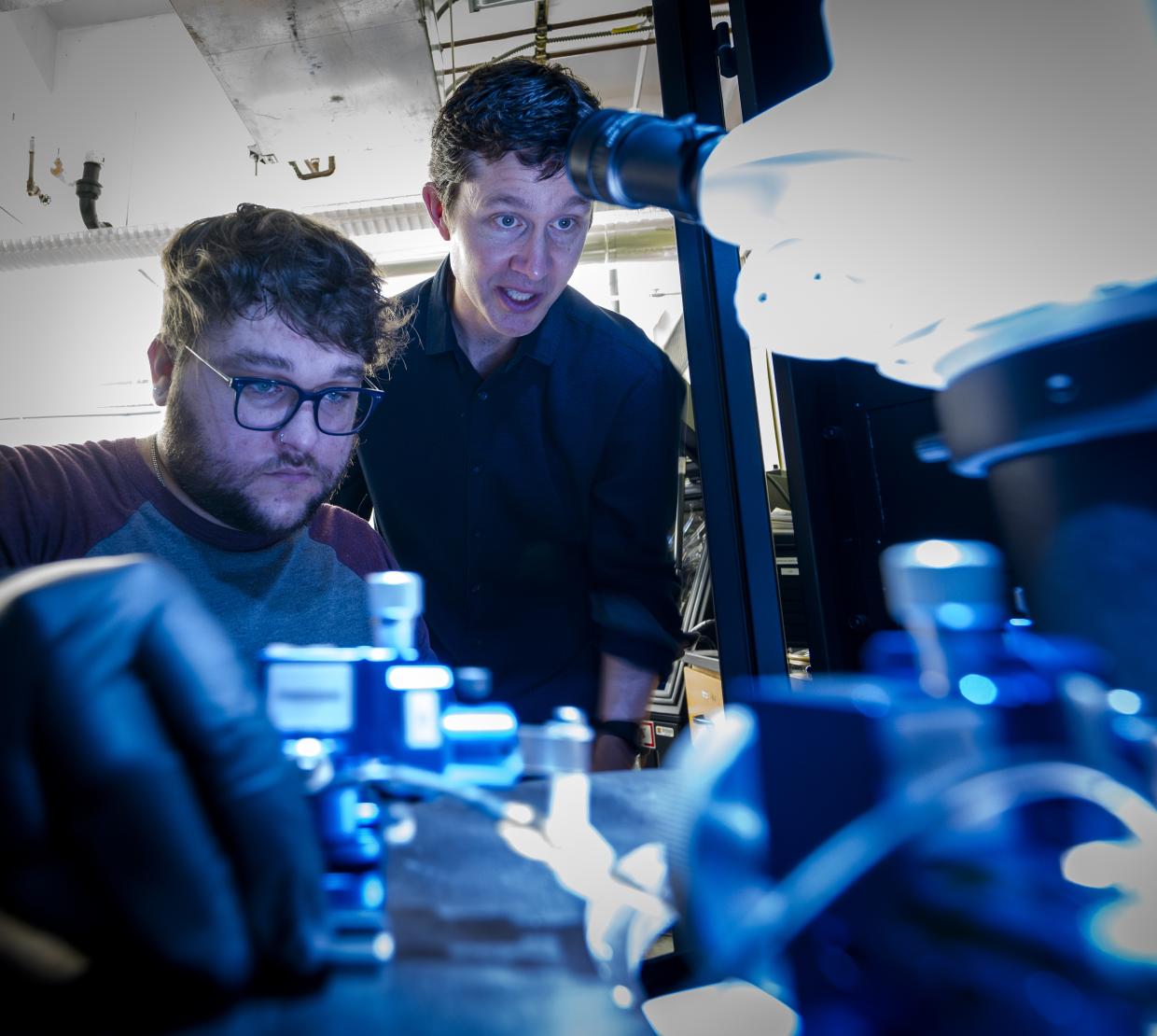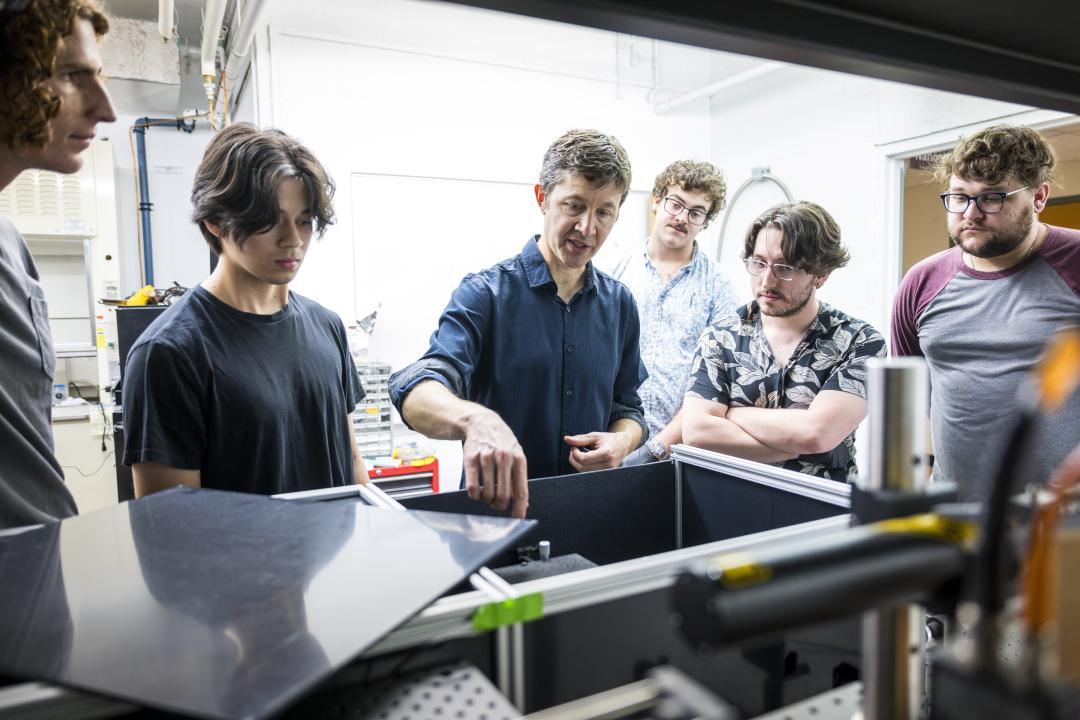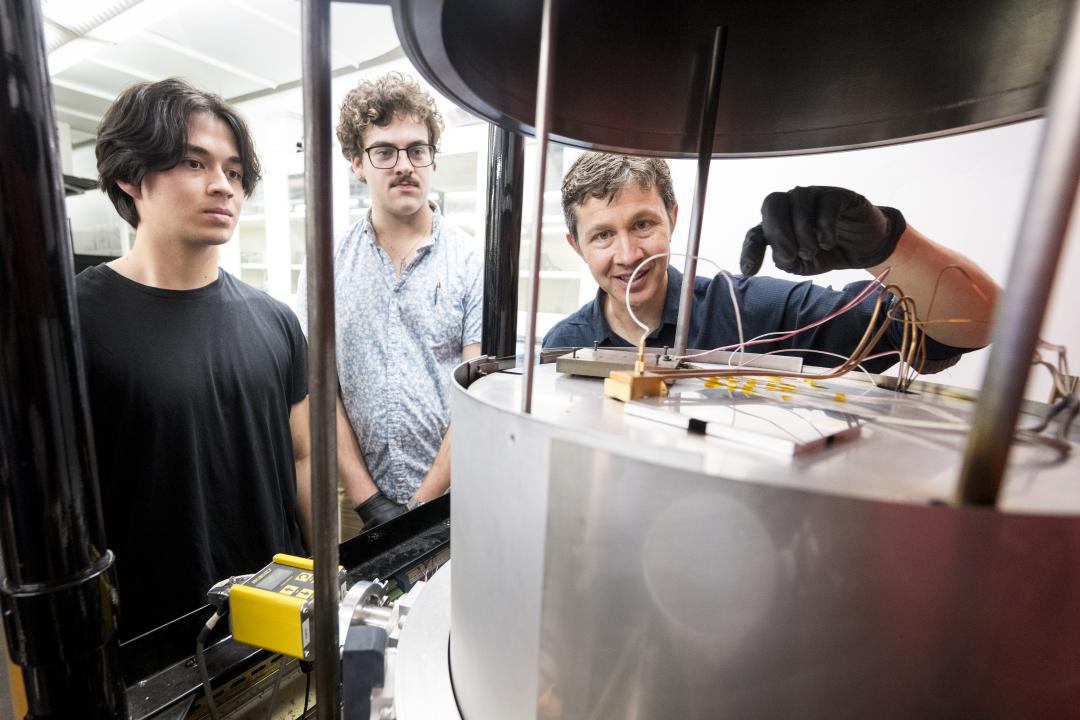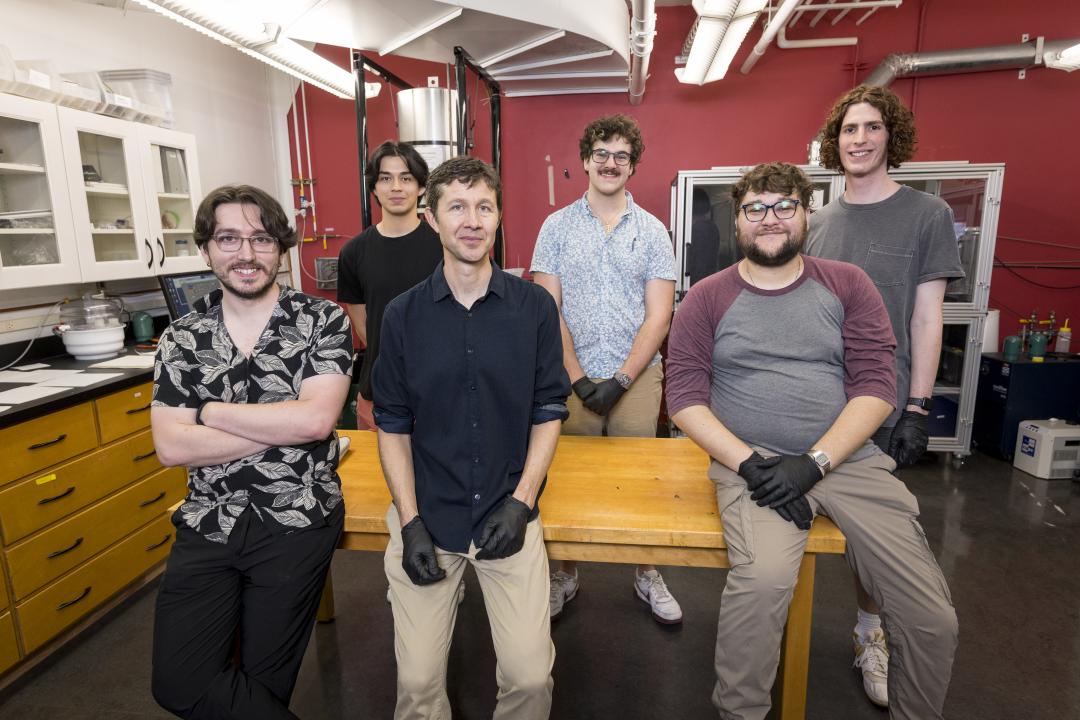Thinner than a human hair
The Minot lab specializes in numerous nanoscale systems such as carbon nanotubes, graphene and two-dimensional semiconductors, the last of which resulted in an international collaboration with scientists in Finland.
“There are many quantum materials in our toolkit to play with, and our lab has pushed the envelope in carbon nanotubes, making devices where the nanotubes are longer, cleaner and with more information about their atomic structure,” Minot said.
Carbon nanotubes, nanoscale hollow tubes composed of carbon atoms, are more than 50,000 times thinner than a human hair. They have applications in automotive parts, electrical circuitry, supercapacitors, transistors, fuel cells, batteries and more.
Graphene, another promising tiny material, is made of a single layer of carbon atoms arranged in a two-dimensional honeycomb lattice.
Although the size is beneficial for keeping devices small, it makes both materials tricky to work with. The Minot Lab has worked to overcome this hurdle by using microscopy and lithography techniques to both see and interact with microscopic materials.
Another option for keeping technology small is layering ultra-thin materials on top of each other.
“In biblical times, we wrote by chipping into a stone block and you’d have to carry around a very heavy tablet,” Minot said. “Finally, we invented paper and now a book can have a thousand pages and we can carry it around easily.”
Currently, technology using silicon, one of the most widely used materials in the electronic industry, works similarly to a stone tablet. Circuits are engraved on the top surface, but the third dimension is not used.
By moving towards thin, stackable materials, researchers could add more “pages,” allowing devices to do more while also maintaining a small size.
“I think it’ll take a lot of effort for the industry to figure out how to make these books with so many pages, but it gives hope and promise to the whole field,” Minot said.
Minot’s work with two-dimensional semiconductors resulted in an international study published in Science in 2022. He collaborated with Aalto University in Finland to develop a powerful, ultra-tiny spectrometer that fits on a microchip and is operated using artificial intelligence. Spectrometers measure and analyze the properties of light, helping to identify the composition and characteristics of substances. Contributing to a field known as optical spectrometry, this device could improve everything from smartphone cameras to environmental monitoring.
The research involved two-dimensional semiconductors, a relatively new class of super thin materials that can control the flow of electricity, allowing them to serve as the foundation for many electronics.
Traditional spectrometers rely on bulky components, while the one Minot helped with could fit on the end of a human hair. The finished product doesn't require assembling separate optical and mechanical components or array designs to disperse and filter light. It can also achieve a high resolution compared to old methods and in a much smaller package. The device is 100% electrically controllable regarding the colors of light it absorbs, making it easily scalable and applicable to numerous fields.







